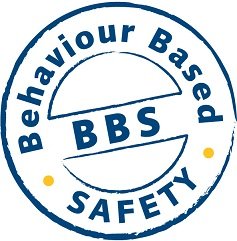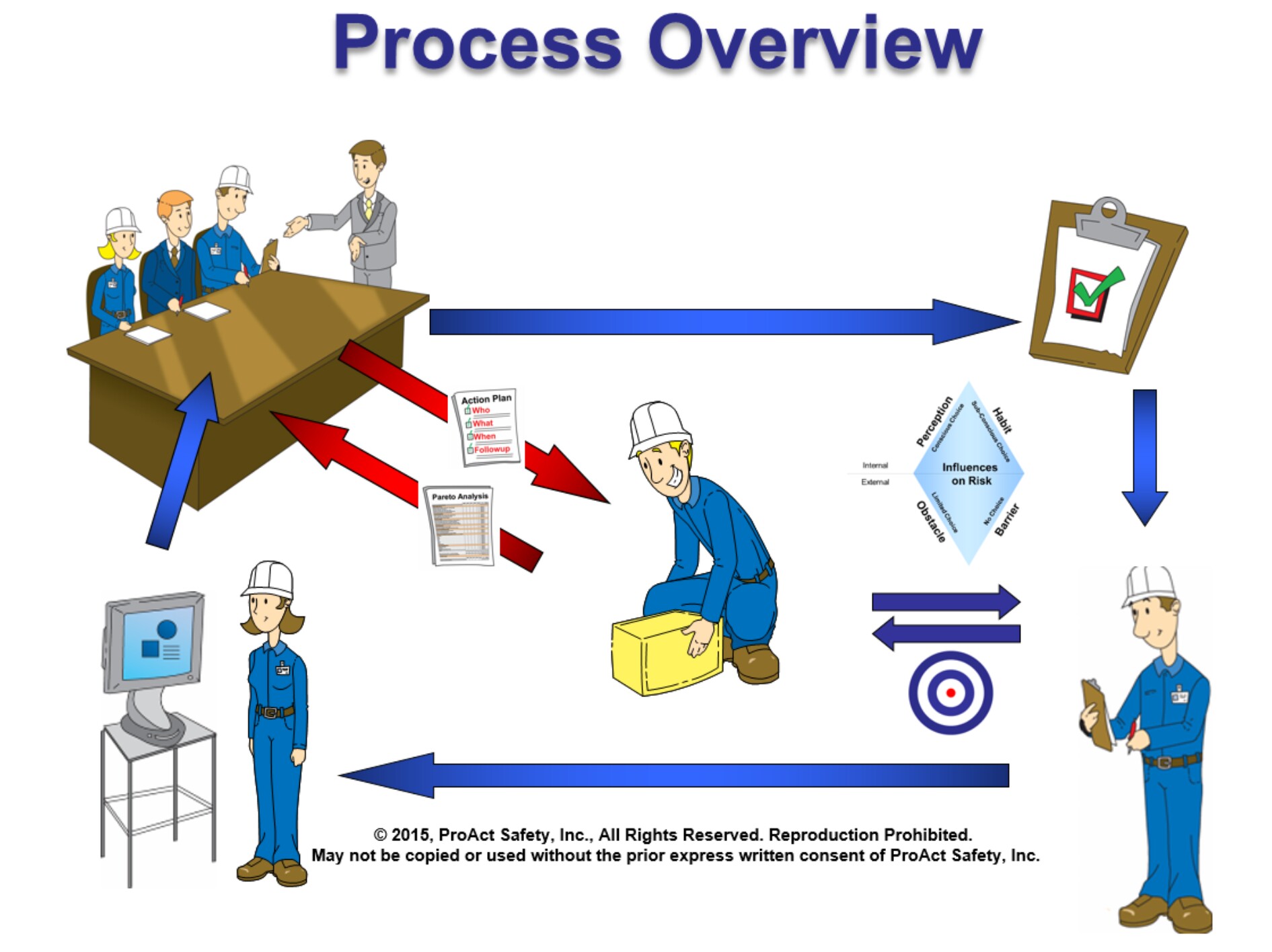Behavior Based Safety
Behavior Based Safety (BBS ) ( German: behavior -based security ) describes an approach in the modern labor protection, based on behavior analysis. Unsafe behavior of workers is to be changed by positive intervention. Behavior Based Safety is considered the best studied and most successful method for changing behavior in the field of occupational safety.
Introduction
Occupational safety is considered to be a pure management task for a long time. The companies are (partly by legal requirements ) OSH specialists for the implementation of and compliance with health and safety regulations act. It tries to compensate by changes in apparatus and protective equipment, the impact potential misconduct by employees. From the statistics of trade associations and other international charitable organizations is well known that the proportion of personal behavior to accidents more than 85% (TR Krause, Leading with Safety) accounts. If you want to reduce the number of accidents significantly, this factor must be considered.
As a means for visualizing the accident pyramid is often used, which can be attributed to the security of the American engineer Herbert William Heinrich established Henry's law, which defines a ratio of 1-29-300. Here, the fatal accidents are recorded at the top of a pyramid. In the next lower level, all serious accidents are described, ie all accidents that have a downtime of the employee. Among the lighter work accidents in which a first-aid service and medical attention is required to appear. These accidents are analyzed by the safety officer, the respective manager and the accident victim exactly. The next step is to try OSH experts to derive measures intended to prevent similar accidents in the future. The BBS approach is to look under the previously developed pyramid still an extension of the base. Not only are all near misses ( near misses ) with considered and determined their causes, but any risky or unsafe behavior of employees ( that would have remained without consequence in this situation, but to a work accident could have resulted ).
Basics
Behavior as a cause
Successful BBS systems rely on the behavior and motives of employees that lead to behavior apart. The rule is that a pattern of behavior is a personal assessment of the benefit. The personal benefit is derived from the personal experience of the person concerned. In general, the ABC model is used to explain these facts.
Activator or antecedent (activator or history ) People tend principle to behavior by a personal benefit is expected. This advantage is determined by factors such as praise and recognition, financial incentives, time savings, your work easier or more. Thus, if a person's behavior praised, he will try to show this behavior again to obtain further praise. The following situation Imagine: An employee hurries to finish an important product. During the production, he does not use his personal protective equipment because he is of the opinion that it takes too long to bring these and attract. During his work done no work accident. It reports the finished product to the supervisor and receives praise for it, because the work has been completed on time. As long as the superior of the lack of protective equipment is not faulted, but praises the work performed, he will place in the future the same behavior again on the day.
Behavior ( Behaviour ) The "visible " behavior.
Consequence ( consequence ) As a consequence, all effects arising from the active behavior, respectively. In terms of the example above means the following: Regardless of the supervisors very close attention to the observance of health and safety regulations, it will notify its employees regularly for defects. This behavior of the manager is perfectly legal, and you must also lived so. If, however, responded by superiors only to defects, this behavior is counterproductive. Because it is not about praise of right conduct, but to censure of wrong behavior. This in turn results in a more important effect is that the person is blamed in the future try to hide the behavior. Unless the opposite, namely the recognition is lived by right conduct, it always comes back to these effects. Which is known in everyday work, when all regulations are complied with, as long as supervisors are present but unobserved ( for example during the night shift) the old behavior will continue to live. To change behavior permanently, so it is necessary to reward the right behavior. Even simple praise is regarded as a reward in this sense.
Another very important factor in behavioral psychology is the continuity. If a risky or unsafe behavior once tolerated and even sanctioned or brought up, so does this affect the credibility. There will be no change in behavior, as long as a faulty behavior ( only in exceptional cases ) is tolerated. But this one of the most difficult factors is associated. It actually means that each unsafe behavior must be addressed. In everyday operations that is not easy to realize, but it is necessary to change behaviors.
The third factor in the field of behavior change affects the time allocation. If a positive behavior shown IMMEDIATELY praise should be pronounced. Not until days later. If incorrect behavior shown, so this also needs to be signaled immediately.
For the BBS systems there are thus three basic principles:
- Praise of right conduct
- Continuity as a clear commitment to work safety
- Timely praise increases the effectiveness
Unconscious behavior influences
Apart from the above measures, which must be taken in order to influence the behavior of employees, there are factors that can be influenced not readily available. These are regarded as passive factors. This includes the search for their own challenge, the habit and the underestimation of the probability of occurrence of an accident and therefore the " illusion of invulnerability own ". All these factors influence the daily behavior and the perception over safety measures. If one wants to sustainable long-term improve occupational safety in the company, you have to deal with it in detail.
Methodology
For a BBS system to be successful, it is necessary to respond quickly and consistently to the wrong and right conduct. The supervisor can not afford alone. So in order to create a broader base, must be trying to win as many employees to actively participate. This has two effects are served: First, the base is much wider; the more people involved in such systems, the higher the probability that regularly take place observations and feedback. On the other serves every individual observation of one's own awareness. As an observant employee first having to worry about whether an action is safe or unsafe, or why it is performed in this manner. One result could well be that the observed performed the action safe and the observer must rethink his own approach in this situation. In the following discussion must be clarified why the action was performed. It is also conceivable, that are detected by observation errors or obstacles in instructions and can be corrected.
In practice, an attempt is made to include as all employees of the company with. Hence the difficulty that employees are not mutually want to " snitch ". Everyone fears a punishment when unsafe behavior is revealed. For this it is first necessary to promote an open culture of errors. The observation principle should not be used to carry out punishments, therefore, a BBS system is mostly anonymous and done in the best case of employees who enjoy a high degree of confidence in the workforce. To promote this culture of open dealing with errors is management task. Therefore, it is crucial that supervisors understand the principles of BBS and implement in their companies. As already described, is one of the essential pillars of a BBS system in the direct communication between ( equal as possible ) colleagues, in which the approach is discussed and ways are being sought to make this action more secure in the future.
Another effect is the statistical analysis of the observations. For this it is necessary to obtain detailed information as possible about the uncertain behavior of staff. This information may be used for disciplinary action but not why the team to control the process of particular importance. If written observations to be evaluated (ie, the communication between observer and observed ), so it should be ensured that, for the record, no information regarding the observed be seen. Conclusions may not be possible from the place and time of observation. The steering team is from the incoming observations detailed statistics that can be used for staff training. May be seen from the statistics indicate a problem in principle to a workspace, you can gain valuable information from this security work so that the " conventional".
Known difficulties
Difficulties surrounding a BBS system are varied and generally hardly describe. The following should be shown some known bugs, and what impact this may have on the system.
Communication is the determining factor in success. The staff must have appropriate information on expectations, possibilities, extent, timing and consequences of the process and be informed repeatedly about the status. Only then the culture can develop, which is crucial for success. This alone represents many companies already facing difficulties because with new safety and training, increased Auswand and thus extra costs associated. Since BBS systems cause changes in the long term, these can often not subject to quarterly review and thus degrade the often necessary representation of the company on the stock market.
Open dealing with errors is not self-evident. Often shy employee, error openly admit, since negative consequences are feared. Here clear rules must be established that prevent misuse. Only if small uncertainties can be communicated openly, a real improvement in occupational safety is possible. Lack of measures interfere with the participation in the system. Recognize the employee that from their observations result in any action, the system will quickly lose their participation. Therefore, it is important to give the corresponding control team opportunities, promptly implement the measures. If there can be a point not a measure that should be openly communicated.
Reward participation in the monitoring process must be quality-oriented. The simplest way to increase the participation provide rewards dar. It is often easy on the participation rewards ( such as the number of observations in a selected period ). This results in the difficulty that possibly low quality observations are made and recorded, just to participate in the reward system. It is better to evaluate the quality of incoming observations and to award accordingly is. An example is the qualification of the damage matrix. In the matrix, the damage severity, and the probability of occurrence is entered. Can often occur the damage, but it is to be expected with only small effects (eg tripping over a bottom edge, with little impact ), the value of the matrix will be correspondingly small.










